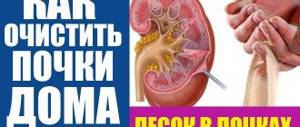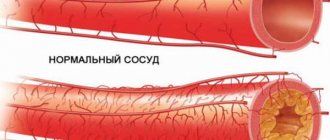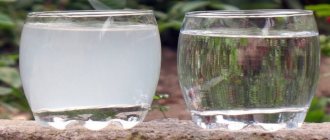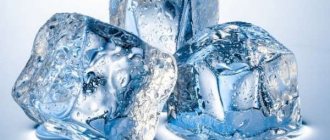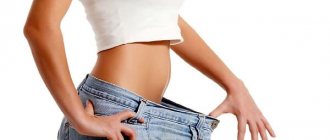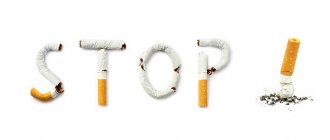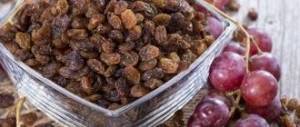Article on the topic
Should you eat soup? Myths and reality
Our expert is herbalist Svetlana Olkhovskaya .
Scientists have calculated: every year an adult consumes 3.75 liters of pesticides that infest modern fruits and vegetables, as well as 5 kg of artificial preservatives and food additives, plus another 2 kg of harmful solids that we inhale through the lungs. Unfortunately, it is impossible to avoid this toxic attack, but it is quite possible to reduce the consumption of toxic substances to a minimum and reduce the harm they cause.
Natural detoxification[ | ]
The following organs of the human body are involved in the removal of waste and toxins[1]:
- the lungs remove carbon dioxide,
- the skin removes lactic acid,
- the liver produces enzymes that metabolize toxins present in the body,
- The kidneys extract metabolites and toxins from the blood and excrete them in the urine (filtering about 180 liters of blood daily, producing an average of 1.5 liters of urine).
- Natural methods of detoxification
: liver cytochrome oxidase system - oxidation, immune system - phagocytosis, binding to blood proteins, excretory - elimination through the liver, kidneys, intestines, skin and lungs. - Promoting detoxification
: the use of medications and physical therapy methods to stimulate natural detoxification methods.
At the beginning of the 2000s, 9 methods of stimulating natural detoxification processes are known[2]:
- Intestinal lavage (CL);
- Laser hemotherapy (LHT);
- Forced diuresis (FD);
- Chemohemotherapy (HCT);
- Hyperbaric oxygen therapy (HBO);
- Hyperventilation (HVL);
- Magnetic hemotherapy (MGT);
- Therapeutic hypothermia and hyperthermia (PH);
- Ultraviolet hemotherapy (UFGT).
Some of these methods do not have proven clinical effectiveness or are of limited effectiveness. In particular, hyperventilation is ineffective in most cases[2].
How to get out of detox correctly
Exiting a detox diet should be as careful as entering it. Otherwise, you risk encountering problems with the gastrointestinal tract. You need to start with low-fat protein products. Then every other day you can add all kinds of seasonings, including salt. And only then switch to carbohydrate foods, which should become the basis for returning to a normal diet. We especially recommend starting your diet with the following products:
- cucumber;
- watermelon;
- artichoke.
Food should be steamed or grilled. And don’t rush out, do everything consistently.
Artificial detoxification[ | ]
- Physical methods
- mechanical removal of toxic substances from the body by cleansing the skin, mucous membranes and blood using modern methods:
Sorption methods
- hemosorption and enterosorption [2], lymphosorption, plasma sorption, - Filtration techniques
- hemodialysis and peritoneal dialysis[2], ultrafiltration, hemofiltration, hemodiafiltration, - Apheresis methods
- plasmapheresis, cytapheresis, selective elimination (cryosedimentation, heparincryosedimentation).
- binding, deactivation, neutralization and oxidation (antidotes, sorbents, antioxidants, indirect electrochemical oxidation, quantum hemotherapy).
- administration of vaccines and blood serum.
General principles for using detoxification agents
Drug detoxification is used as an independent method of treatment for poisoning of minor and moderate severity. Severe intoxications often require the use of hardware blood purification techniques (hemodialysis). Photos of similar procedures are available on the Internet.
As a rule, therapy begins with gastric lavage. After this, the patient is administered enterosorbents and saline laxatives. Next, antidote therapy and forced diuresis are prescribed. These procedures are carried out both at the pre-hospital and in-hospital stages of treatment.
Of course, each of the drugs described above has contraindications. However, in some cases they have to be neglected in order to save the patient’s life. You can learn more about detoxification drugs from the video in this article.
Table of correspondence between stages of care and medications used:
| Assistance phase | Drugs |
| Water, enterosorbents, folk remedies | |
| Infusion, antidotes | |
| All of the above groups of drugs |
Detoxification therapy[ | ]
Detoxification therapy is most often used in the treatment of acute exogenous poisoning. In this case, emergency detoxification of the body
— neutralization of exogenous and endogenous toxic substances[2].
By the early 2000s, in the treatment of acute poisoning in clinical practice, the principle of complex detoxification using algorithms had developed that provided a therapeutic effect with minimal intensity of exposure [2].
Detoxification therapy can be:
- Intracorporeal
- enterosorption - Extracorporeal
(
efferent therapy
[3]) - hemosorption, plasmapheresis, hemodialysis, hemofiltration, hemodiafiltration, cryosedimentation.
Extracorporeal detoxification is used as renal replacement therapy. For example, in cardiac patients, such therapy increases survival after heart surgery from 40% to 45-60% or more [4]. For purulent peritonitis, detoxification therapy in extracorporeal form helps reduce endogenous intoxication and reduces mortality [5].
The artificial removal of toxins from the body can be considered as a temporary replacement or stimulation of one of the sufferers' natural detoxification systems in each case:
- Monoxidase system of the liver
(partially) - hemosorption, indirect electrochemical oxidation of blood, ultraviolet blood irradiation (UFOI), low-flow membrane oxygenation of blood. - Excretory
- hemodialysis, ultrafiltration, hemofiltration, hemosorption, plazapheresis, plasmasorption, lymphosorption. - Immune
- immunosorption, cytapheresis, ultraviolet irradiation of blood (UFOI).
Video: cleansing the body in 3 days
Read further:
Alcohol poisoning and first aid in the form of detoxification
How to properly detoxify the body?
What to do in case of furosemide overdose: symptoms and consequences
Ethylene glycol vapor poisoning - symptoms, first aid
Paracetamol poisoning in children and adults - symptoms and consequences
Article rating:
Share with friends:
You may also be interested in:
Can pomegranate peels stop diarrhea?
Is it necessary to reduce the temperature in case of poisoning in children and adults?
How to take antibiotics for intestinal infections?
First aid for acute poisoning
Non-medical detox[ | ]
In modern Russia and other countries, a fashionable unscientific trend of “detox” is widespread, whose representatives say that “toxins” are formed in the body, which, in their opinion, need to be gotten rid of with the help of special food, dietary supplements (dietary supplements) and “therapeutic” procedures[ 1][6][7]. This idea is erroneous, and people who distribute their nutritional recommendations based on it are often charlatans[6][7][1].
In the human body, toxins (for example, drunk alcohol) are indeed continuously formed or supplied from the outside; they are neutralized in the liver and excreted by the kidneys, intestines and, to a small extent, through the skin and lungs[1][6]. No amount of smoothies or teas will help the liver do its job better, and liver and kidney diseases cannot be cured with simple home remedies. To ease the work of the liver, you should avoid overeating, self-medication, drinking alcohol, and so on [6].
How to plan a diet during intense mental activity
If your work involves intense mental activity, this is not an obstacle to detox. First of all, you need to add seaweed to your diet. They are useful for cleansing the body because they can tilt the pH of the blood towards the alkaline side. Thanks to this, the functioning of the gastrointestinal tract improves. Algae also contains albic acid, which is a powerful sorbent. The following products are especially recommended:
- nori;
- Undaria;
- hijiki;
- kelp;
- kombu, etc.
In addition, vegetable salads are very beneficial for the body. Detox involves consuming them in large quantities. You need to refill with cold-pressed vegetable oils. They are useful both for cleansing the body and for mental activity. It is also worth noting the beneficial substances that should be used to diversify the diet. These include calcium, phosphorus, iodine, vitamins A, C, D and others.
Detoxification for substance addiction[ | ]
Alcohol detox[ | ]
Alcohol detoxification, in contrast to clearance detoxification, is a process in which the body returns to a normal state after a long period of abuse of alcohol, which is one of the psychoactive substances[8].
Cessation of long-term alcohol exposure without drug treatment can cause health problems, including death[9]. To mitigate acute alcohol use disorders, pharmacological analogues of alcohol are used—gamma-aminobutyric acid (GABA) agonists, most often benzodiazepine derivatives[8].
Alcohol detoxification is not a treatment for alcoholism, but helps cope with withdrawal symptoms[10].
In Russian clinical practice, clearance detoxification is usually used, which in the case of alcohol dependence has neither scientific justification nor significant effect[8].
Drug detox[ | ]
Doctors use detoxification to reduce or alleviate withdrawal symptoms, helping the addicted person adjust to life without using drugs. Medication-assisted detoxification is not intended to treat drug addiction, but it is an initial step in further treatment[11]. Often, detoxification in drug addiction treatment occurs as part of a community program that lasts several months and is conducted in specialized facilities rather than in a hospital.
Medication detoxification is tailored to the location of treatment. Most programs include counseling and therapy during detox to help the addict deal with the effects of withdrawal.
Emetics
Emetics are drugs that cause vomiting. As an indication for their use, the instructions cite a pathology in which it is impossible to lavage the stomach, but it is necessary to remove its contents.
For poisoning, two types of emetics are used, central and reflex. Central (apomorphine) affects dopamine receptors in the medulla oblongata, peripheral (copper sulfate, wormwood preparations) - directly on stomach receptors.
Apomorphine is administered parenterally, subcutaneously, 0.2-0.5 ml of a 1% solution. Reflex agents are taken orally in accordance with the instructions for use.
Note: centrally acting emetics are ineffective when the excitability of the vomiting center is suppressed (coma, anesthesia, taking antipsychotics). Reflex drugs are effective in the absence of consciousness with preservation of reflexes, but their use is not recommended due to the high risk of aspiration of vomit. For unconscious patients, the stomach is cleansed by lavage.
Notes[ | ]
- ↑ 1 2 3 4 5 Delaby M.-N.
Les régimes détox sont-ils nocifs? : [French] : [arch. October 17, 2016] / Marie-Noëlle Delaby // Sciences et Avenir: [electr. resource]. — 2020. — 14 January. - ↑ 123456
Luzhnikov et al., 2004. - Kostyuchenko, 2003.
- Hemodialysis Department, 2007, p. 71.
- Antropova et al., 2007, p. 70.
- ↑ 1 2 3 4 Motova, Elena
. Myths about healthy eating and diets on YouTube. — Scientific and educational forum “Scientists against myths 7.” — 2020 (June 16) — Lecture 2. — 11:32−14:24 - ↑ 1 2 Vodovozov, Alexey
. Wouldn't it be cleaner? on YouTube - Science Pro - 2017 - ↑ 1 2 3 Sivolap, Yu. P.
Alcohol abuse and pharmacotherapy of alcoholism // Neurology, neuropsychiatry, psychosomatics: journal. — 2014. — No. 3. — P. 4–9. - doi:10.14412/2074-2711-2014-3-4-9. - Bayard, Max.
Alcohol Withdrawal Syndrome: [English] / Max Bayard, Jonah McIntyre, Keith R. Hill ... // American Family Physician: j. - 2004. - Vol. 69, no. 6 (March). — P. 1443–1450. - PMID 15053409. - Sivolap, Yu. P.
Treatment of alcohol dependence: rational and controversial approaches // Journal of Neurology and Psychiatry named after. S. S. Korsakova. - 2014. - T. 114, No. 5. - P. 53–56. - Statkevich D.A.
“The effectiveness of inpatient detoxification programs for opioid addiction and adherence to medical recommendations” // Psychiatry, Psychotherapy and Clinical Psychology.
The threat of toxins
Toxicity levels systematically exceed the analytical limits of the current technologies available to us:
- An astronomical number of pollutants produced by humans and released into the environment: more than 71 million new organic and inorganic substances produced by the agri-food industry since 1957. Currently, 12,000 new substances are added every day!
- It is impossible to assess the human body's detoxification capacity against specific toxins.
- It is difficult to predict how the biological sum of various toxic substances will act in the environment over time.
Thus, we are all prey to aggressive toxins, uncontrolled, which spare no one.
Many people believe that it is necessary to detoxify the body only when there are serious disorders for which official medicine does not offer a solution. However, maintaining a healthy body is vital to prevent the buildup of toxins before disease occurs. In fact, any person over 16 years old needs periodic cleansing of the body.
Literature[ | ]
- Surgery / Ed. B. Jarrell, R. Karbasi; Ch. ed. Russian edition Yu. M. Lopukhin, V. S. Savelyev. - M.: GEOTAR: Medicine, 1997. - P. 282. - 1070 p.
- Efferent therapy: in the complex treatment of internal diseases: [arch. August 27, 2018] / Ed. and with the participation of A. L. Kostyuchenko. - St. Petersburg. : Foliot, 2003. - 292 p. — ISBN 5-93929-057-4.
- Luzhnikov, E. A.
Modern idea of detoxification therapy for acute poisoning of chemical etiology / E. A. Luzhnikov, Yu. S. Goldfarb, A. M. Marupov // Russian Chemical Journal. - 2004. - T. XLVIII, No. 2. - P. 117–124. — UDC 615.9:615(G). - Antropova, N. M.
Modern technologies of extracorporeal detoxification for peritonitis / N. M. Antropova, N. G. Kolosov, A. K. Rovina // Bulletin of new medical technologies: journal. - 2007. - T. 14, No. 2. - P. 69–70. — UDC 616.381-002(G). — ISSN 1609-2163. - Department of hemodialysis and extracorporeal detoxification // Circulatory pathology and cardiac surgery: journal. - 2007. - No. 2. - P. 70–71. — ISSN 1681-3472.
Detoxifying the body at home
An excellent remedy is ordinary drinking water. Drinking more than two liters per day helps to increase diuresis and accelerate the elimination of toxins. Mild diuretics help speed up the flow of urine.
It is advisable to use folk remedies as part of detoxification therapy for alcoholism and other not too severe poisonings. It is recommended to take in significant quantities decoctions of chamomile, motherwort, ginger (if there is no allergy) or milk with honey. These products are inexpensive, but have a significant positive effect, helping to get rid of toxic substances.
It is worth understanding that traditional methods can be used exclusively for mild food poisoning, and severe drug and chemical intoxications are eliminated in a hospital setting. In such cases, natural remedies can be an excellent adjuvant, but not the main method of therapy.
For thirty years, scientific research has consistently reported progressive environmental toxicity that threatens life on the planet. Today, more and more people are turning to detox therapy to cleanse their bodies.
What medications will help cleanse the body, in what cases is this program carried out and are there any contraindications?
The procedure becomes a necessity dictated by the modern world and the “dark” side of progress:
- Adverse environmental factors.
- Food industry overloaded with preservatives.
- Chemicals that are overused: hygiene products, shampoos, hair dyes, cosmetics.
- Medicines, including synthetic vitamins.
- Refined products.
- Vaccines containing heavy metals.
This list is beautifully complemented by bad habits and overeating.
Results after detoxification course
The obvious benefits of cleansing the body will not take long to appear. Within a week you will notice:
- shortness of breath gradually goes away
- excess weight loss
- improvement of appearance
- "sobriety" and prudence, calmness
- it becomes easier to move
- the body gets enough sleep faster
- reduction of anxiety
- surge of energy and strength
- good concentration
- improvement of brain activity
- memory improvement
The older a person is, the more obvious the positive changes are for him after a course of detoxification. This suggests that over the years, more and more toxic substances settle in the body. It becomes increasingly difficult for the body to absorb harmful substances alone. Use detoxifying agents.
Signs of mild and moderate intoxication
- Allergy
- Fatigue syndrome
- Any addictions (, drug addiction)
- Anxiety, depression
- Obsessive states
- Nausea (after eating)
- Signs of indigestion.
- General malaise
- Diarrhea, constipation
- Acne, skin rashes
- White coating on the tongue
- Pale skin, even after exercise
Any or more of these signs indicate toxic poisoning of the body.

